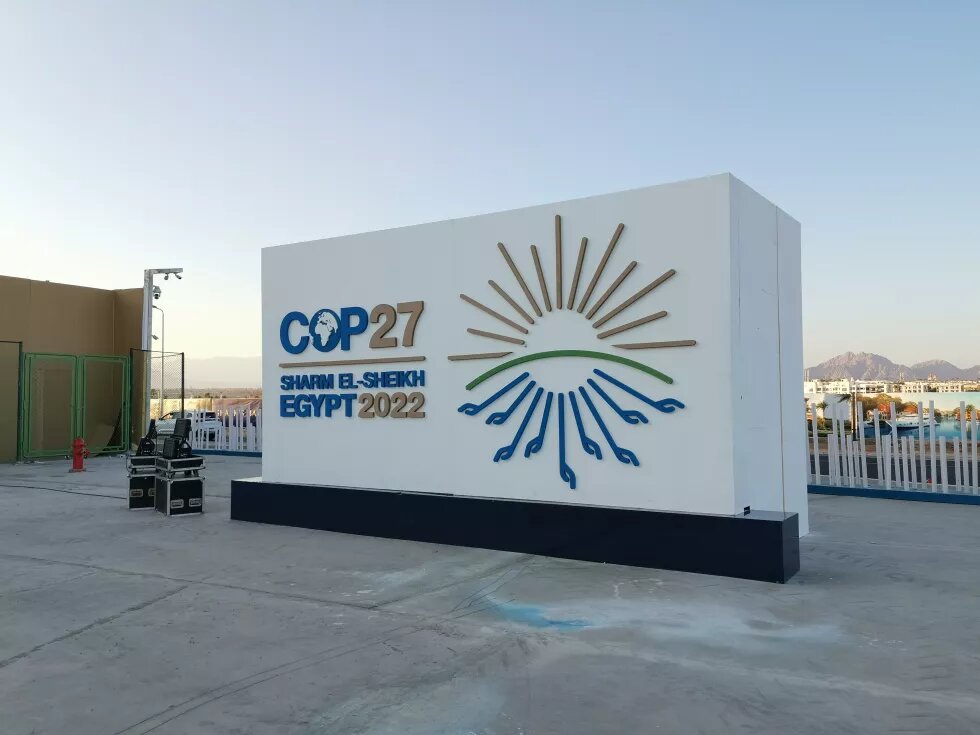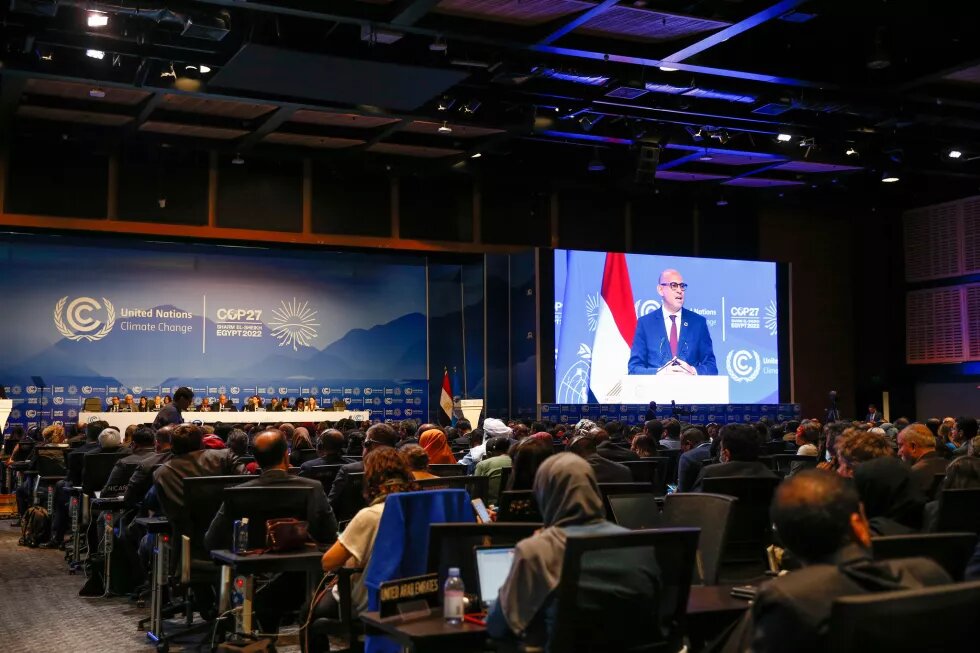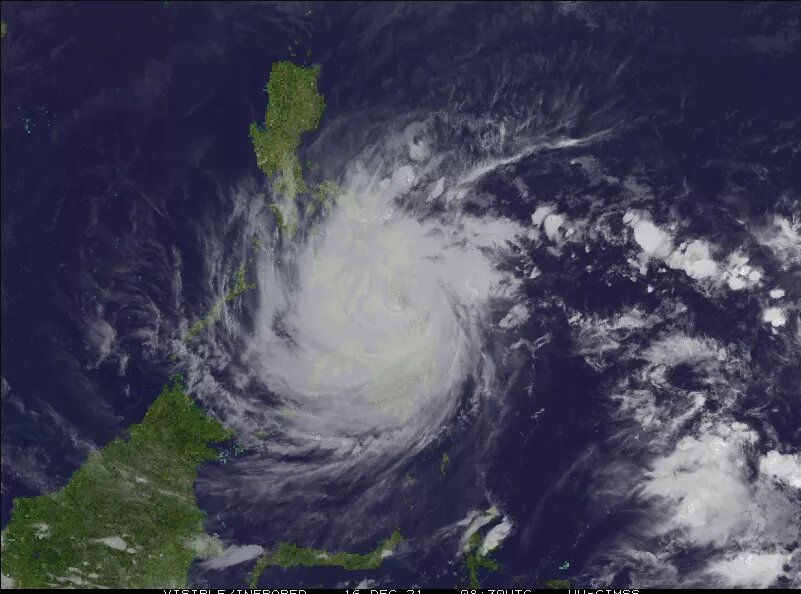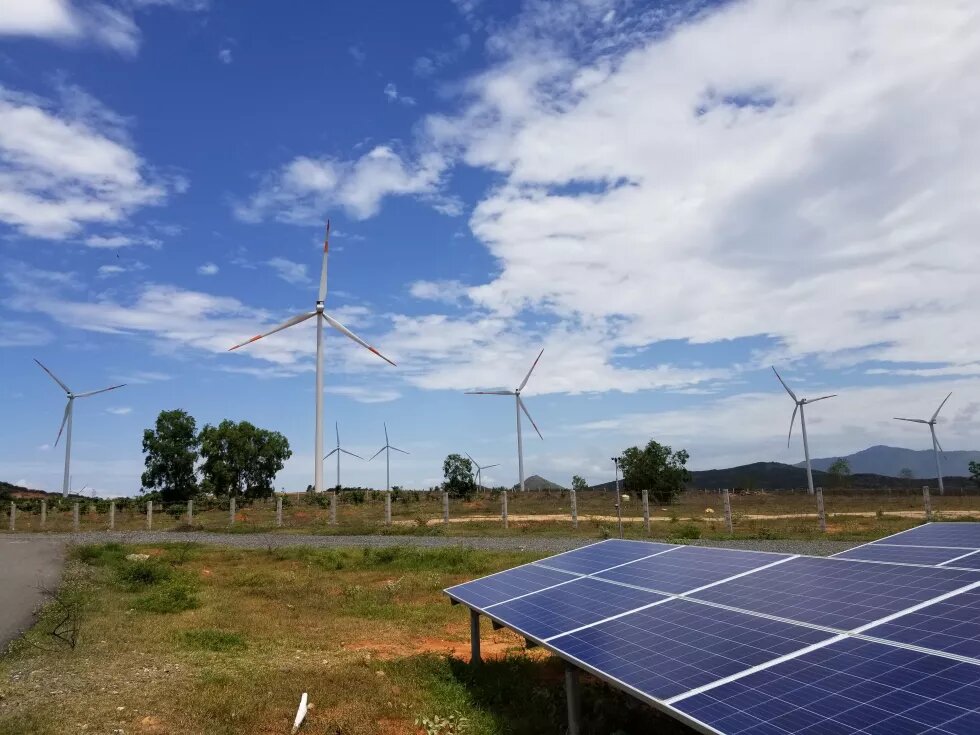
Egypt hosted the Conference of Parties (COP) 27 on 6 - 20 November 2022, with the slogan “Together for Implementation”. COP27 was branded as an African COP, and was meant to foreground climate issues that are priorities for African and other developing countries. Accordingly, the main issues during the negotiations at the conference were that of financing for Loss and Damage, Fossil Fuels and Just Energy Transition Partnership.

2022 was a year of intensifying climate impacts across the world, from devastating floods in Pakistan and Nigeria, protracted drought in East Africa, and record summer heat waves in Europe and China. Southeast Asia was not spared from climate impacts, with notably the Philippines being hit by multiple tropical storms and typhoons. In the week before COP27 itself, the Philippines was hit by tropical storm Nalgae that caused flooding and landslides which damaged about 11,300 houses, 141 infrastructure buildings, and 57,000 hectares of cropland.
At the same time as climate impacts are already intensifying, the Emissions Gap Report 2022 published by the United Nations Environment Programme (UNEP) highlighted that the world is still on track for increasingly dangerous levels of warming as policies currently in place could result in global temperatures rise of 2.8°C by 2100, which would trigger even more devastating climate impacts. Against this backdrop, Egypt hosted the Conference of Parties (COP) 27, with the slogan “Together for Implementation”. COP27 was branded as an African COP, and was meant to foreground climate issues that are priorities for African and other developing countries.
Accordingly, one of the main issues during the negotiations at the conference was that of financing for Loss and Damage, to compensate and help those in vulnerable countries who are already losing lives and livelihoods to devastating climate impacts to recover. The issue of climate Loss and Damage is particularly pertinent for Southeast Asia, a world region that is among the most affected by climate impacts, with three Southeast Asian countries (Myanmar, Philippines, Thailand) among the top ten countries worldwide most affected by extreme weather events from 2000 - 2019 according to the Climate Risk Index 2021.
On Loss and Damage
The issue of Loss and Damage had long been championed by developing countries, particularly those most vulnerable to climate impacts such as small island states. Vanuatu had first proposed an international insurance pool to compensate small island developing states for the impacts of sea-level rise in 1991. Developing countries argued that wealthy developed countries whose carbon emissions had historically contributed the most to climate change should compensate those who have contributed least to the problem yet are experiencing the worst impacts.
The issue of Loss and Damage had already been highlighted by developing countries, including Southeast Asian states, at COP26 in Glasgow in 2021. The G77 and China negotiating bloc, which includes all Southeast Asian states, had put forward a proposal for the establishment of a Loss and Damage finance facility. The attempt to establish such a financing facility was ultimately thwarted by developed countries on the last day of the conference.
The COP26 outcome addressed the issue of Loss and Damage by setting up a dialogue to discuss loss and damage funding and to operationalize and finance the Santiago Network that would catalyze technical support on the issue.
Developing countries, supported by civil society allies, kept up the pressure and momentum on the Loss and Damage issue leading up to COP27. At the beginning of COP27, they successfully achieved the addition of Loss and Damage finance to the official conference agenda that was adopted by Parties. The inclusion of Loss and Damage finance in the official conference agenda for the first time at COP27 sent a concrete signal that this issue would be central for the outcome of the negotiations in Sharm-El-Sheikh.
This development was particularly pertinent as research from insurer Swiss Re had found that natural catastrophes in 2021 alone had resulted in economic losses of USD 270 billion worldwide. The Climate Risk Index 2021 meanwhile estimated that Myanmar, Philippines, and Thailand had experienced estimated losses of around USD 12 410.38 million PPP due to extreme weather events from 2000 - 2019. Southeast Asia’s development ambitions risk being set back by the extensive losses due to climate impacts.
Moreover, extreme weather events amplified by climate change cause losses and damages beyond the economic sphere. This was also recognized in negotiating texts under the Loss and Damage finance agenda item at COP27.
Developed and developing countries had contrasting positions concerning loss and damage finance, resulting in intense negotiations in Sharm-El-Sheikh. Developing countries including Southeast Asian states were unified in their demand for the establishment of a Loss and Damage fund that would be paid for by developed countries. Meanwhile, developed countries resisted the proposal for the fund over concerns it could open them up to liabilities for the impacts of historical emissions and put forward other proposals instead.
The G7, led by its current President Germany, launched the Global Shield Against Climate Risk at COP27 in partnership with the V20 group of climate vulnerable countries. The global shield is an insurance-based mechanism that mobilises pre-arranged finance which can be quickly and reliably disbursed before or just after climate change-related disasters.
The Philippines is one of the first recipients of Global Shield packages. However, while approximately $282.4 million has been pledged by developed countries to this initiative, the amounts raised do not match the scale of the losses and damages already being caused by climate impacts.
For example, catastrophic floods in Pakistan this year alone caused an estimated $30 billion of losses and damages. Developing countries, who are already struggling with external debt stocks that grew by 8 per cent to US$11.1 trillion in 2021, were also concerned that an insurance-based mechanism would ultimately add further financial burdens in the form of insurance premiums that they could not afford.
Hence, developing countries maintained their push for the establishment of a Loss and Damage fund at COP27. Cracks however appeared among the united front of developing countries during the conference. For the first time, small island developing states grouped China and India together with other major emitters and publicly called on them to also pay for climate Loss and Damage. Despite these cracks, both sides ultimately held to their positions and negotiations remained deadlocked throughout the conference.
As COP27 drew towards its scheduled end, there were signs of a breakthrough as the EU reversed its stiff opposition towards the establishment of the Loss and Damage fund. The EU put forth a proposal that would also include contributors from among the ranks of developing countries. This proposal turned the tables on developing countries, particularly China, with its high annual emissions, extensive cumulative emissions, and large GDP. The EU’s position shift spurred a final sprint of negotiations to secure an agreement on the establishment of a Loss and Damage fund that could achieve consensus in Sharm-El-Sheikh.
In the morning of 20 November 2022, two days after the scheduled end of COP27, a consensus was finally reached on establishing the Loss and Damage fund. The final consensus agreement left the details of the fund’s operationalization to be hashed out by a Transitional Committee. The Committee would consider institutional arrangements and modalities for the new fund.
On Fossil Fuels
While COP27 made symbolic and moral progress on addressing the consequences of climate change, it ultimately failed to advance on tackling the root cause of the crisis, greenhouse gas emissions from fossil fuels. There were hopes in Sharm-El-Sheikh to build on the landmark COP26 Glasgow Pact that was historic in being the first in the series of climate conference outcome decisions to mention the phase-down of unabated coal power and inefficient and fossil fuel subsidies.
The Intergovernmental Panel on Climate Change (IPCC) has made clear that CO2 emissions must decline by about 45 percent from 2010 levels by 2030 and reach net zero around 2050 in order to limit global warming to 1.5°C with limited to no overshoots in order to prevent the worst catastrophic impacts of climate change. The IPCC has also shown that rapid and far-reaching transitions in energy, land, urban and infrastructure (including transport and buildings), and industrial systems are needed to limit global warming to 1.5°C above pre-industrial levels.
Negotiators and activists in Sharm-El-Sheikh were encouraged by the outcome of the G20 Summit hosted concurrently with COP27 in Indonesia (the largest economy and most populous country in Southeast Asia). The G20 Summit declared that leaders of the world's 20 largest economies had agreed to pursue efforts to limit global warming to 1.5 °C above pre-industrial levels and recognized the need to speed up efforts to phase down coal use.
Significantly, G20 member India, who will assume the Presidency of the group in 2023, had also called for the phase-down of all fossil fuels in Sharm-El-Sheikh. This was a shift in India’s position from last year in Glasgow, when it and China, speaking on behalf of a group of developing countries, had watered down decision language concerning coal from phase-out to phase-down.
Despite the push against fossil fuels at COP27 by an increasing number of countries including historic oil producers like Norway, oil-producing states allied to host country Egypt ultimately blocked an ambitious outcome decision on the issue. The outcome of COP27 merely reproduced language from COP26 concerning phase-down of coal power, holding up progress on tackling the root cause of the intensifying climate crisis.
Just Energy Transition Partnership (JETP)
As COP27 demonstrated the limitations of the multilateral climate process once again, attention needs to be given to other possibilities to advance in tackling the climate crisis. Southeast Asia, notably Indonesia, should be a focus, due to it successfully concluding a Just Energy Transition Partnership (JETP) with the G7 during the G20 Summit. Indonesia was the 9th largest CO2 emitter in the world in 2021, with 89.61% of its primary energy and 81.74% of its electricity production derived from fossil fuels respectively.
The JETP between the G7 plus Denmark and Norway will mobilise USD 20 billion of public and private funding to finance Indonesia’s energy transition from fossil fuels towards renewable energy. Under the agreement, Indonesia will seek to cap its greenhouse gas emissions from the power sector at 290 million metric tons by 2030, rather than its initial goal of 2037. Indonesia will also aim to increase the share of renewables in power generation to at least 34% by 2030. If successful, the JETP with Indonesia could reduce more than 300 million metric tons of greenhouse gas emissions through 2030, and more than 2 billion metric tons through 2060 compared to current business-as-usual projections. The deal also has a social dimension and should benefit communities and groups directly or indirectly affected by the energy transition such as those who depend on the coal sector.
While there are concerns about the proportion of loans compared to grants in the JETP financing package, such deals like the one with Indonesia could provide a way for developed countries to help developing countries accelerate their energy transition and reduce their emissions, without being constrained by the slow pace of the multilateral climate process. Southeast Asia is potentially a center for such just transition partnerships as another JETP is already being negotiated with Vietnam. The importance of just transition in addressing the climate crisis was recognized in the COP27 outcome decision, that sets up a new work program on the issue.
The outcomes of COP27 were ultimately mixed, with various implications for Southeast Asia. The establishment of a Loss and Damage fund was an important victory for climate vulnerable countries worldwide. People and communities in highly vulnerable Southeast Asian countries like the Philippines, Myanmar, and Thailand stand to receive much needed aid to rebuild their lives after devastating climate impacts, although the details of the operationalization of the fund are still to be worked out.
The lack of progress in Sharm-El-Sheikh towards addressing the root cause of the climate crisis, greenhouse gas emissions from fossil fuels, however leaves climate vulnerable countries in Southeast Asia and beyond at risk of experiencing escalating catastrophic climate impacts, which would strain the capacity of the Loss and Damage fund to provide relief.
JETPs could offer a potential way forward for developed countries to help developing countries in Southeast Asia and beyond to progress on energy transition and greenhouse gas emissions reduction, without sacrificing economic development and societal welfare. Southeast Asia is a center of climate vulnerability and eyes will be focused on the region to see if the JETPs can offer an effective path towards resolving the climate crisis in a just and equitable manner.
__
Julian Theseira is a Climate Activist and Policy Researcher from Malaysia. He is currently an Erasmus Mundus Scholar enrolled in the European Politics and Society (EPS) Václav Havel Joint Master programme from Charles University, and Jagiellonian University. Julian coordinates the Climate Action Network (CAN) Working Group on the Global Stocktake (GST), the evaluation mechanism of the Paris Agreement.
The views expressed in this article are not necessarily those of Heinrich Böll Stiftung.








